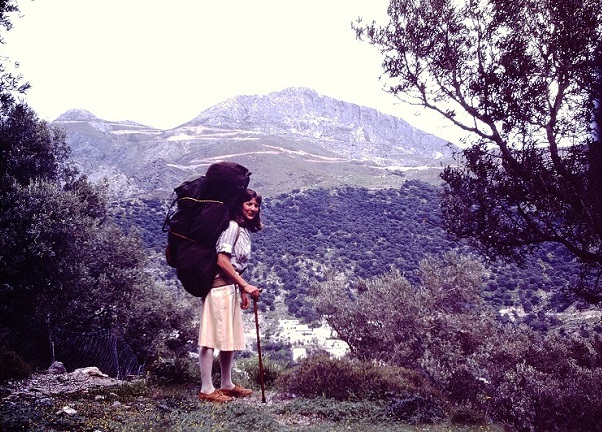
I continue my conversation with the Pulpwood Queens Book Club, this time about the roots of my novel THE ARIADNE CONNECTION.
NOTE: This series started on Dec. 31. I’m honored to have my seriocomic novel of midlife reinvention PAUSE, published by Book View Cafe, selected by The International Pulpwood Queens Book Club as a December 2022 title. http://www.thepulpwoodqueens.com During my featured week in late December, I was asked to post every day about my novels and writing life, so am reproducing them in this series. All of my novels I discuss are available at http://www.bookviewcafe.com
Kali mera! (Good morning) This time I’ll talk about my Greek islands pandemic/healer novel THE ARIADNE CONNECTION, which won the Chanticleer Global Thriller Grand Prize.
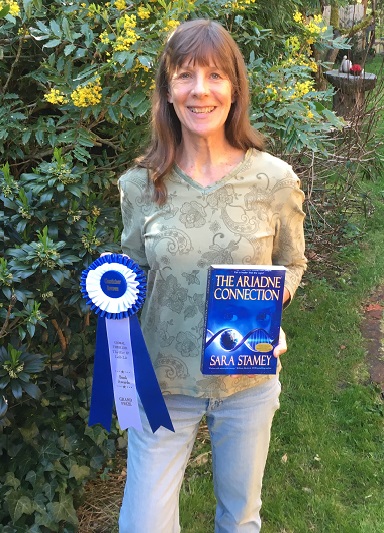
First, the back cover copy for some context of the story:
A Journey to the Crossroads of Science and Myth
The New Leprosy plague and a geomagnetic reversal threaten earth’s precarious balance. An unlikely trio may hold the key to reset the compass of the world:
- “Saint Ariadne” Demodakis—a Greek bioelectricity researcher who realizes she’s curing plague victims by laying on hands.
- Peter Mitchell—a jaded American veteran of the latest Gulf War, now a smuggler in the Mediterranean.
- Leeza Conreid—a paparazza equipped with the latest neurally-connected media implants, who wants revenge and a big story.
Peter, blackmailed into bringing Leeza along, hires on with reclusive Ariadne to secretly transport her to sacred sites in the Greek islands. She seeks to confirm a connection between the pandemic, geologic upheavals, and ancient lore that promises healing for humans and the planet.
Peter doesn’t realize they’ll be pursued by violent Sons of the Prophet, mercenaries, and a cult of warrior women, out to claim Ariadne’s rumored powers—or kill her. He will need all his wits and weapons to protect Ariadne as she labors to control her connection to the dangerous forces that may deliver a global cure. Or destroy them all.
***
The seeds of the novel grew from my lifelong fascination with Greek mythology, culture, and art. Below, a recent trip to Lindos on Rhodes:
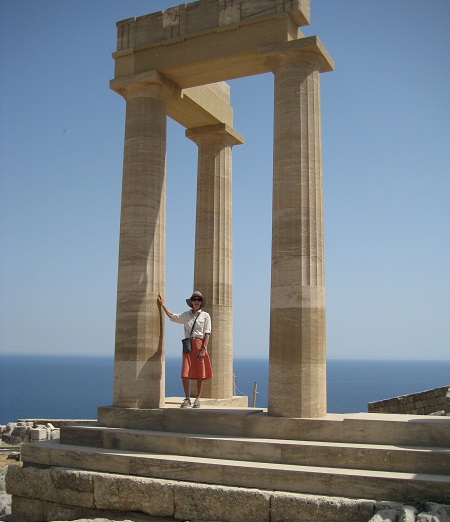
My first extended travel out of the U.S. was a four-month-long backpacking trip through the Greek islands and mainland with my then-partner Jim, in 1982. I was thrilled to finally see the Parthenon and Athens, the birthplace of the democratic ideal, and walk in the footsteps of Homer and Plato. The Parthenon is a symbol of hope for my character Ariadne at a desperate point in the novel.
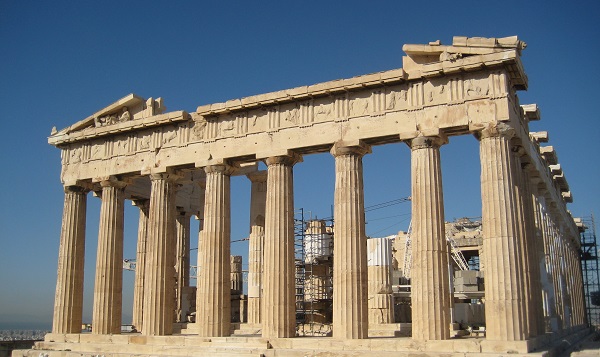
What surprised me on my 1982 trip was the intense connection I felt when Jim and I took the night ferry to Crete and started hiking the rugged mountains and coastlines, camping in ancient Minoan ruins of the “fabled 99 cities.” Here I am with my insanely heavy backpack. (I later sent some of it home.)
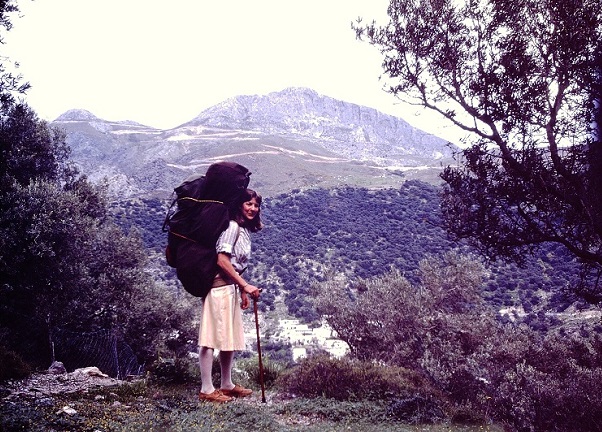
One day when I sat alone, meditating among the labyrinthine remains of ancient Falassarna, in a courtyard beside a dry fountain, I swear I saw the long-vanished people come alive and dance while water trickled and a man played the Pan-pipes. Magic is alive in these islands!
Here is Jim in those ruins of Falassarna, which look like they’re carved out of the hillside itself. A similar setting appears in the novel.
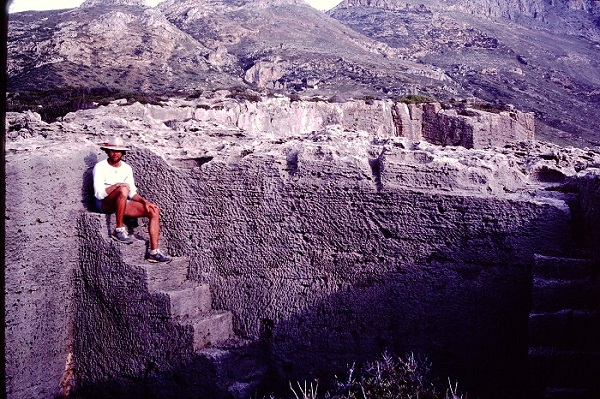
Jim and I had some wonderful adventures in our trekking around Crete. A highlight was when we were hiking the trail along a roadless stretch of the south coast and ran across a grizzled goat herder named Josef. We ambled along with him and his goats, and he would later find his way into my novel. He accompanied us to a higher dirt road – the only one traversing that stretch of the rugged coastlin — and we saw the road blocked by a huge pile of brush, sticks, and old boards. It was the Greek Orthodox Easter weekend approaching, and everything was shut down, including any buses. We were befriended by a dignitary of the village, Stelios Mamalakis, who let us camp on his property and invited us to join the Easter services in the church his grandfather had built. He took us on a hike to see some ancient mosaics and gather wild herbs, and he named me “Sara KriKri” for the agile wild goats of the Cretan mountains. I describe the village and the Easter service in the novel, as it was an amazing experience. And the bonfire in the middle of the road? On Good Friday the men brought a stuffed effigy of Judas to put atop the bonfire and burn on Easter eve.
One of our camping spots was near this deserted chapel, just one more bit of the history found everywhere in these islands:
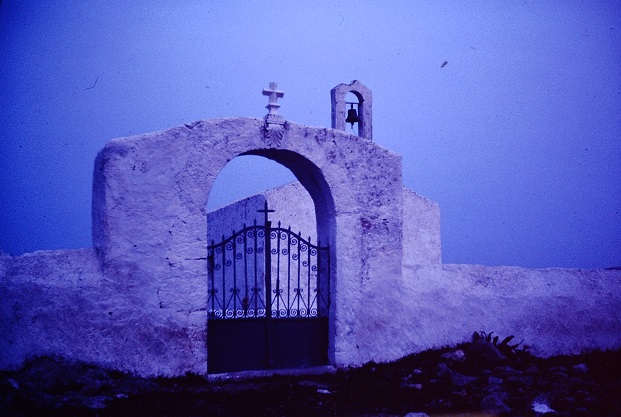
We had many more adventures, including one rather tipsy night in a Cretan taverna when a group of Greek Navy men kept buying us shots of ouzo and strange appetizers. We all ended up throwing the glasses and plates on the floor and dancing among the shards, an old custom there. (I do believe we helped pay for damages.) A scene like that plays out in the novel as well, involving the reckless paparazza character Leeza Conreid, who’s following Ariadne in hopes of a big story.
The Psari Kafe (Fish cafe) was a typical seaside taverna, where Jim and I watched a woman in black beating an octopus carcass on the boulders to tenderize it. Since I have made friends with intelligent octopuses, I can’t eat them.
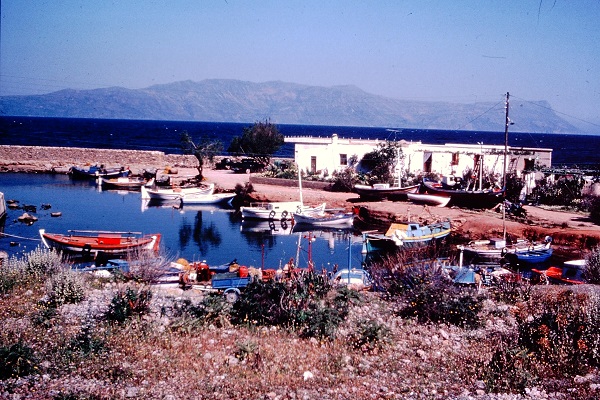
The character of Ariadne, a scientist and reluctant spiritual healer, was a challenge to create. She has perhaps inherited a mystical connection to the Minoan Ariadne, the daughter of King Minos, who knew the secrets of the labyrinth where the dangerous Minotaur lived. My Ariadne’s journey involves physical danger from violent factions who want to control her “secret cure,” and also spiritual danger as she delves inward to tap possibly dark forces.
Delphi, the site of the famous oracle and “navel of the world” in ancient Greece, figures in the novel, first as a memory of light and love for Ariadne. The Tholos of Athena is a site in the novel:
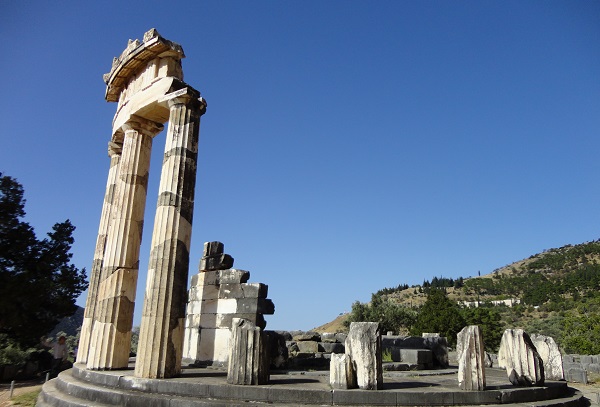
Thor and I hiked to the Corycian Cave near Delphi, where worshippers of Dionysos may have held ecstatic rituals. Modern pagans still hold rituals here. Ariadne delves into a similar cavern in the novel.
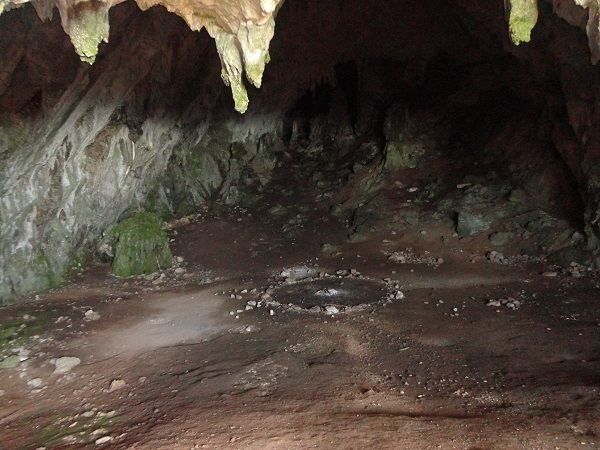
I’m writing a sequel, THE ARIADNE DISCONNECT, in a planned trilogy, and look forward to returning to the Greek islands soon. I’ve infected Thor with my love of Greece, and we had our fourth trip booked before the pandemic cancelled it. The world needs Ariadne now!
Magic is still alive in Greece, and it always lures me deeper into the clear purple-blue depths of the Mediterranean. Until I swim there again, I wish you a Greek blessing: “Chairete!” (Rejoice!)
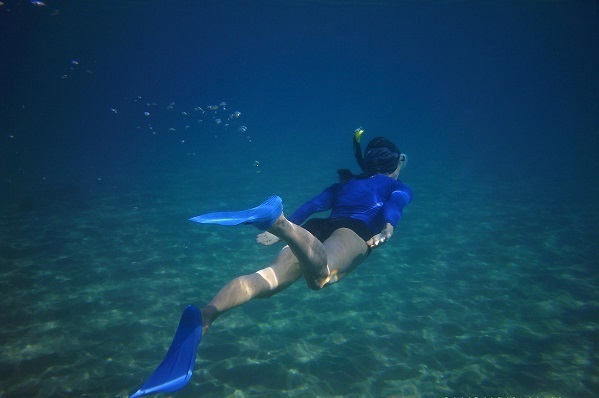
P.S.
If you’re interested in traveling to Greece (independent of tour groups) or learning more, I have several Rambling Writer blog series of my recent trips with Thor at www.sarastamey.com or www.bookviewcafe.com I’d be happy to answer questions.
*****
You will find The Rambling Writer’s blog posts here every Saturday. Sara’s latest novel from Book View Café is Pause, a First Place winner of the Chanticleer Somerset Award and an International Pulpwood Queens Book Club selection. “A must-read novel about friendship, love, and killer hot flashes.” (Mindy Klasky). Sign up for her quarterly email newsletter at www.sarastamey.com

